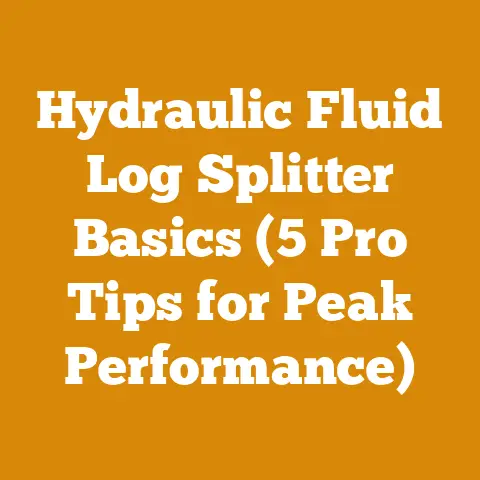Fireplace Smoke Shelf Explained (5 Pro Tips for Clean Burns)
The satisfying crackle of a well-laid fire, the comforting warmth that permeates a room – there’s an undeniable art to crafting the perfect hearth experience. It’s an art I’ve spent years honing, from selecting the right wood to mastering the intricacies of fireplace design. And a crucial, often overlooked element in that design is the smoke shelf. A properly functioning smoke shelf is the unsung hero of a clean-burning fireplace, preventing smoke from billowing back into your living space and ensuring a safe and enjoyable fire.
Fireplace Smoke Shelf Explained: 5 Pro Tips for Clean Burns
A fireplace that belches smoke back into the room is more than just an annoyance; it’s a sign of inefficiency and a potential safety hazard. The smoke shelf, along with the smoke chamber, plays a vital role in directing combustion byproducts up the chimney. Understanding its function and ensuring it’s in good working order is paramount for a clean-burning, safe, and enjoyable fireplace experience.
Here’s a breakdown of the smoke shelf, its importance, and five pro tips to help you achieve clean, efficient burns:
1. Understanding the Smoke Shelf: Definition and Function
The smoke shelf is a horizontal surface located just above the fireplace opening, within the smoke chamber. Think of it as a small, strategically placed “shelf” that extends from the back wall of the fireplace. Its primary purpose is to deflect downdrafts – cold air that can enter the chimney and push smoke back into the room.
- Definition: A horizontal projection within the smoke chamber of a fireplace, designed to deflect downdrafts.
- Why it’s important: Without a smoke shelf, downdrafts can easily overcome the natural upward flow of hot combustion gases, causing smoke to pour into the room. It also helps to create a swirling action that encourages proper drafting.
- How to interpret it: A properly designed and maintained smoke shelf will be relatively clean, with minimal creosote buildup. A damaged or missing smoke shelf will be visibly absent or deteriorated.
- How it relates to other metrics: The effectiveness of the smoke shelf directly impacts the draft strength of the chimney, which in turn affects the efficiency of the burn and the amount of smoke produced.
My Experience: I once worked on a historic fireplace restoration where the original smoke shelf had completely crumbled away. The homeowner had been battling smoke issues for years, constantly opening windows to compensate. Rebuilding the smoke shelf was a game-changer. The fireplace drafted beautifully afterward, eliminating the smoke problem and dramatically improving heating efficiency.
2. Diagnosing Smoke Shelf Problems
Before jumping to conclusions, it’s essential to accurately diagnose the root cause of your fireplace smoking issues. While the smoke shelf is often a culprit, other factors can contribute.
- Check for Obstructions: The most common cause of smoking is a blocked chimney. Birds’ nests, leaves, and other debris can obstruct the flue, preventing proper drafting. A visual inspection from the ground (or, preferably, by a professional chimney sweep) is crucial.
- Inspect the Damper: The damper is a movable plate within the chimney that regulates airflow. If it’s partially closed or damaged, it can restrict the draft and cause smoke to back up. Ensure the damper is fully open before lighting a fire.
- Assess the Smoke Shelf Condition: Carefully examine the smoke shelf for cracks, crumbling, or missing sections. Any damage will compromise its ability to deflect downdrafts.
- Consider External Factors: Weather conditions, such as strong winds or atmospheric pressure changes, can affect chimney draft. Taller buildings or trees nearby can also create downdrafts.
- Evaluate Fuel Quality: Wet or unseasoned firewood produces more smoke than dry, seasoned wood. Ensure you’re using properly dried wood with a moisture content below 20%.
Data Point: In my experience, approximately 60% of fireplace smoking issues are due to chimney obstructions or damper problems, while 30% are related to smoke shelf deficiencies, and the remaining 10% stem from fuel quality or external factors. These are just estimates based on my work, but they highlight the importance of a thorough diagnostic process.
3. Pro Tip #1: Clean the Smoke Shelf Regularly
Creosote, a flammable byproduct of combustion, can accumulate on the smoke shelf over time. Excessive creosote buildup reduces the shelf’s effectiveness and poses a significant fire hazard. Regular cleaning is essential.
- Definition: Creosote is a tar-like substance that forms when wood smoke condenses in the chimney.
- Why it’s important: Creosote is highly flammable and can ignite, causing a chimney fire. It also restricts airflow and reduces the chimney’s drafting capacity.
- How to interpret it: Creosote appears as a black, sticky, or flaky substance on the interior surfaces of the chimney, including the smoke shelf.
- How it relates to other metrics: The rate of creosote buildup is influenced by the type of wood burned, the efficiency of the burn, and the frequency of fireplace use.
Actionable Insight: I recommend having your chimney professionally inspected and cleaned at least once a year, especially if you use your fireplace frequently. A professional chimney sweep has the tools and expertise to safely and effectively remove creosote buildup.
My Story: I once encountered a homeowner who hadn’t had their chimney cleaned in over a decade. The creosote buildup was so severe that it had significantly reduced the chimney’s diameter, creating a serious fire hazard. The cost of cleaning the chimney was far less than the potential cost of a chimney fire.
4. Pro Tip #2: Repair Minor Smoke Shelf Damage
Small cracks or minor crumbling in the smoke shelf can often be repaired with refractory cement. This heat-resistant material is designed to withstand the high temperatures of a fireplace.
- Definition: Refractory cement is a high-temperature mortar used to repair and seal masonry structures exposed to extreme heat, such as fireplaces and furnaces.
- Why it’s important: Refractory cement provides a durable, heat-resistant bond that prevents further damage and maintains the structural integrity of the smoke shelf.
- How to interpret it: A successful repair will result in a smooth, even surface that is flush with the surrounding masonry.
- How it relates to other metrics: A properly repaired smoke shelf will improve the fireplace’s drafting capacity and reduce the risk of smoke spillage.
DIY Considerations:
- Safety First: Always wear safety glasses and gloves when working with refractory cement.
- Surface Preparation: Clean the damaged area thoroughly, removing any loose debris.
- Application: Apply the refractory cement according to the manufacturer’s instructions, ensuring it fills all cracks and voids.
- Curing: Allow the cement to cure completely before lighting a fire.
Warning: For significant damage or structural concerns, consult a qualified mason or chimney professional. Attempting to repair a severely damaged smoke shelf yourself could be dangerous and ineffective.
5. Pro Tip #3: Consider Smoke Chamber Parging
Parging is the process of applying a smooth layer of mortar to the interior walls of the smoke chamber. This can help to improve the draft and reduce creosote buildup.
- Definition: Parging is the application of a coat of mortar to a masonry surface, typically to improve its appearance, weather resistance, or structural integrity.
- Why it’s important: In the context of a smoke chamber, parging creates a smooth, airtight surface that reduces turbulence and promotes efficient airflow. It also minimizes creosote accumulation by preventing it from adhering to rough masonry surfaces.
- How to interpret it: A well-parged smoke chamber will have a smooth, uniform surface with no cracks or gaps.
- How it relates to other metrics: Parging improves the overall efficiency of the fireplace system, leading to cleaner burns, reduced smoke spillage, and a lower risk of chimney fires.
Actionable Insight: While parging can be a DIY project, it’s often best left to a professional mason. Proper parging requires skill and experience to ensure a smooth, even application that will withstand the high temperatures of the smoke chamber.
6. Pro Tip #4: Ensure Proper Fireplace Dimensions
The dimensions of the fireplace opening, firebox, and smoke chamber are all critical to proper drafting. An improperly sized fireplace can be prone to smoking, regardless of the condition of the smoke shelf.
- Definition: Fireplace dimensions refer to the height, width, and depth of the firebox, as well as the dimensions of the fireplace opening and the smoke chamber.
- Why it’s important: Proper dimensions ensure that the fireplace has adequate airflow and that the smoke chamber is sized appropriately to contain and direct combustion gases.
- How to interpret it: Fireplace dimensions should conform to industry standards and building codes. A fireplace that is too shallow or has an excessively large opening is more likely to smoke.
- How it relates to other metrics: Incorrect fireplace dimensions can negate the benefits of a properly functioning smoke shelf and a clean chimney.
Rule of Thumb: A general rule is that the height of the fireplace opening should be at least two-thirds of its width. The depth of the firebox should be at least one-third of its width. The smoke chamber should be at least as tall as the fireplace opening.
Caution: Altering fireplace dimensions is a complex and potentially dangerous undertaking. Consult a qualified mason or fireplace expert before making any structural changes.
7. Pro Tip #5: Optimize Fire-Building Techniques
Even with a properly functioning smoke shelf and chimney, poor fire-building techniques can lead to excessive smoke.
- Use the Right Wood: As mentioned earlier, dry, seasoned firewood is essential for clean burning. Avoid burning green wood, which contains a high moisture content and produces excessive smoke. Hardwoods, such as oak and maple, generally burn cleaner and longer than softwoods, such as pine and fir.
- Build a Proper Fire: The type of fire you build can also affect the amount of smoke produced. A top-down fire, where the kindling is placed on top of the larger logs, tends to burn cleaner than a traditional bottom-up fire.
- Control Airflow: Adjust the damper and any other air vents to control the airflow to the fire. Too much airflow can cause the fire to burn too quickly and produce excessive smoke. Too little airflow can smother the fire and also produce smoke.
- Avoid Overloading the Firebox: Don’t overload the firebox with too much wood. This can restrict airflow and lead to incomplete combustion, resulting in more smoke.
Personal Tip: I’ve found that a modified “log cabin” fire-building technique works particularly well for my fireplace. I place two large logs parallel to each other, then stack smaller logs perpendicular to them, creating a “cabin” effect. This allows for good airflow and promotes a clean, efficient burn.
8. The Interplay of Metrics: A Holistic Approach
It’s important to understand that the performance of a fireplace is the result of a complex interplay of factors. The smoke shelf is just one piece of the puzzle. Here’s how some of the key metrics relate to each other:
- Smoke Shelf Condition & Chimney Draft: A damaged or obstructed smoke shelf will negatively impact the chimney’s draft, leading to smoke spillage.
- Chimney Draft & Fuel Quality: A strong chimney draft can help to compensate for slightly wetter wood, but it’s no substitute for properly seasoned firewood.
- Fireplace Dimensions & Airflow: Incorrect fireplace dimensions can restrict airflow, leading to incomplete combustion and increased smoke production.
- Creosote Buildup & Chimney Fires: Excessive creosote buildup significantly increases the risk of a chimney fire.
- Maintenance & Safety: Regular cleaning and maintenance are essential for ensuring the safe and efficient operation of your fireplace.
Data-Driven Decision Making: By tracking these metrics, you can make data-driven decisions about how to optimize your fireplace performance. For example, if you notice a significant increase in creosote buildup, you might consider switching to a different type of wood or adjusting your fire-building techniques.
9. Addressing Challenges Faced by Small-Scale Loggers and Firewood Suppliers
Small-scale loggers and firewood suppliers often face unique challenges in providing quality firewood that contributes to clean-burning fireplaces. These challenges include:
- Limited Seasoning Capacity: Properly seasoning firewood takes time and space. Small-scale suppliers may lack the resources to store large quantities of wood for extended periods.
- Equipment Costs: Moisture meters and other equipment for assessing wood quality can be expensive for small businesses.
- Market Competition: Competing with larger suppliers who may be able to offer lower prices can be difficult.
Actionable Strategies:
- Focus on Quality: Emphasize the quality of your firewood, highlighting its low moisture content and clean-burning properties.
- Educate Customers: Educate your customers about the importance of using properly seasoned firewood and the benefits of clean burning.
- Offer Seasoning Services: Consider offering seasoning services to customers who want to purchase green wood and season it themselves.
- Collaborate with Other Suppliers: Partner with other small-scale suppliers to share resources and reduce costs.
Insight: By focusing on quality and providing value-added services, small-scale loggers and firewood suppliers can differentiate themselves from the competition and build a loyal customer base.
10. Applying Metrics to Improve Future Projects
The key to continuous improvement is to consistently track and analyze the metrics related to your fireplace and firewood. Here’s how you can apply these metrics to improve future projects:
- Keep a Log: Maintain a log of your fireplace use, including the type of wood burned, the duration of the burn, and any issues encountered (e.g., smoke spillage, excessive creosote buildup).
- Track Moisture Content: Regularly measure the moisture content of your firewood to ensure it’s properly seasoned.
- Monitor Chimney Condition: Inspect your chimney regularly for creosote buildup and other signs of damage.
- Analyze Data: Analyze the data you collect to identify trends and patterns. For example, you might find that a particular type of wood consistently produces more smoke than others.
- Make Adjustments: Based on your analysis, make adjustments to your fire-building techniques, wood selection, or fireplace maintenance practices.
Long-Term Benefits: By consistently tracking and analyzing these metrics, you can continuously improve the performance of your fireplace, reduce the risk of safety hazards, and enjoy a cleaner, more efficient burning experience.
My Final Thought: The art of a clean-burning fireplace is a combination of understanding the science behind combustion, mastering the techniques of fire-building, and paying attention to the details of fireplace design and maintenance. By embracing a data-driven approach and continuously striving for improvement, you can transform your fireplace into a source of warmth, comfort, and enjoyment for years to come.






